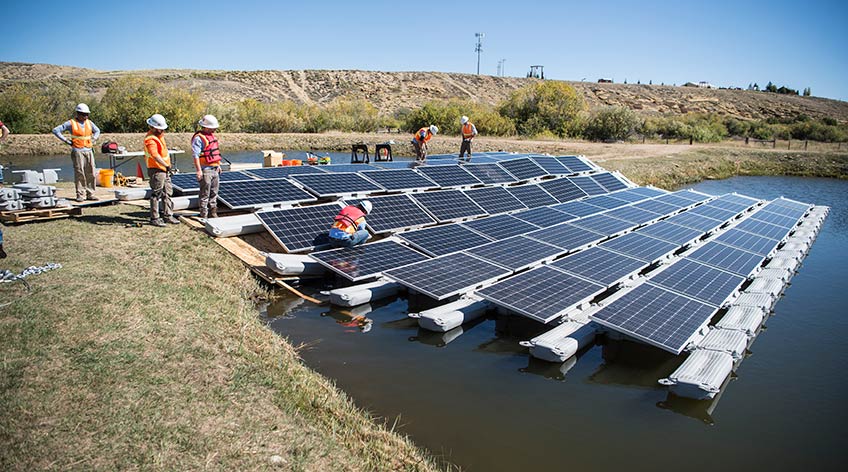The National Renewable Energy Laboratory (NREL) has pegged floating PV as a “rapidly emerging technology” in a report that assesses the U.S. technical potential at 2100 gigawatts, which could generate 9.6% of current electricity generation.
The economic potential—a subset of the technical potential—is not estimated, yet the study shows that two states, Florida and California, have both expansive reservoirs and high land costs, which suggests those states could be the first where solar installations on water could compete on price with those on land. Ranked this way, Maine and Virginia would be next.
Global installed floating PV totaled about 200 MW in 2017, says the report, of which 80% was in Japan. That suggests that high land costs may be a key early driver for this technology, given the high cost of land in Japan.
Global capacity has since grown to 1.1 GW, as reported by the World Bank, illustrating the sector’s rapid expansion. The costs of floating PV this year in China, Japan, and India, according to the World Bank report, have ranged from US $0.80 to $1.20 per peak watt, while a levelized cost of electricity analysis showed floating PV costs about 10% higher than ground-mounted costs for a 50 MW system.
Floating PV co-located with hydropower facilities achieves cost savings due to the existing transmission infrastructure, notes NREL’s report. Because shade from floating PV reduces evaporation losses, the NREL study also calculated those evaporation losses at each reservoir it evaluated.
NREL’s report, Floating Photovoltaic Systems: Assessing the Technical Potential of Photovoltaic Systems on Man-Made Water Bodies in the Continental United States, was published in the journal Environmental Science and Technology and is available for purchase, while supplemental data are available at no cost.
To estimate the technical potential of floating PV in the continental U.S., NREL began with a dataset of man-made reservoirs; subtracted those used for recreation, navigation, or fish and wildlife; then subtracted those located more than 50 miles from a transmission line; and finally subtracted small water bodies. NREL assumed that 27% of the surface area of the remaining reservoirs could be covered with floating PV, based on the median coverage value of existing floating PV projects. The lab also assumed a fixed tilt angle of 11 degrees, which it said is commonly used in floating PV and results in high-density arrangements; and used a capacity density of 10,000 square meters per MW. NREL then used the System Advisor Model to estimate the annual generation of the modeled floating PV installations.
This content is protected by copyright and may not be reused. If you want to cooperate with us and would like to reuse some of our content, please contact: editors@pv-magazine.com.








By submitting this form you agree to pv magazine using your data for the purposes of publishing your comment.
Your personal data will only be disclosed or otherwise transmitted to third parties for the purposes of spam filtering or if this is necessary for technical maintenance of the website. Any other transfer to third parties will not take place unless this is justified on the basis of applicable data protection regulations or if pv magazine is legally obliged to do so.
You may revoke this consent at any time with effect for the future, in which case your personal data will be deleted immediately. Otherwise, your data will be deleted if pv magazine has processed your request or the purpose of data storage is fulfilled.
Further information on data privacy can be found in our Data Protection Policy.